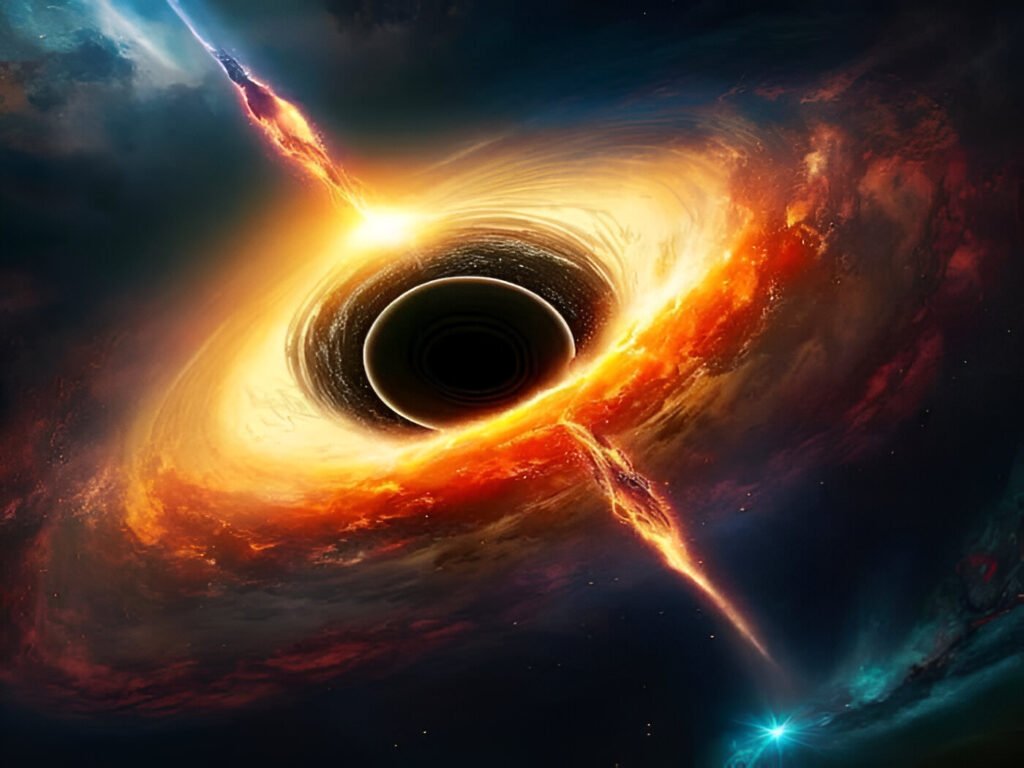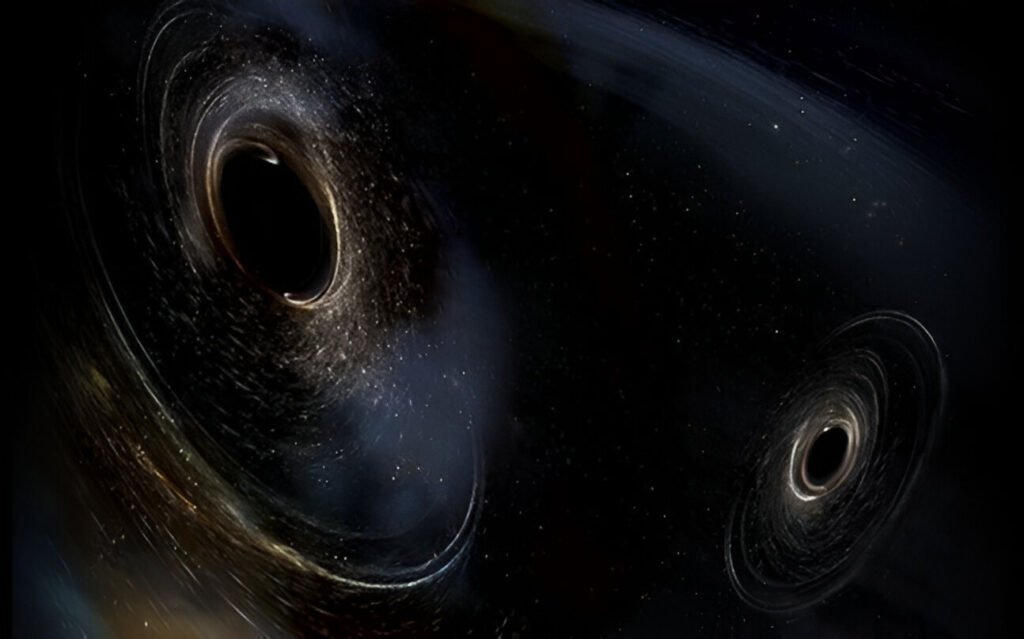
Indian astronomers have made a significant advancement in black hole research by discovering and measuring an Intermediate Mass Black Hole (IMBH) for the first time in history. The new findings not only increase India’s capabilities in space research, but also allow for deeper understanding of the evolution of black holes.
The Discovery: Shedding Light on Cosmic Mysteries
The Aryabhatta Research Institute of Observational Sciences (ARIES) based at the Department of Science and Technology (DST), identified an IMBH situated in NGC 4395 galaxy, 4.3 million light years away from earth. Theological research was conducted at India’s greatest optical telescope, the Devasthal Optical Telescope (DOT). Scientists detected clouds of gas rotating around the IMBH at a distance of 125 light minutes from the black hole, roughly 2.25 billion kilometers away, with a velocity dispersion of 545 km/s.
Understanding Intermediate Mass Black Holes
Astronomers consider black holes to be star or supermassive, and with the newly found IMBH’s 100 to 100 thousand solar mass range, black hole research is set to make great strides. It is difficult to capture imbh’s due to their weak radiations and existing dim galaxies. However, the identifying black hole discovered in NGC 4395 which weighs 22 thousand times more than the sun is sure to accelerate evolutions of other black holes.

Advanced Strategies and Local Technology
A black hole’s mass can be computed accurately using the researcher’s method spectrophotometric reverberation mapping. It involves measuring the time gaps between the black hole’s accretion disk light and gas cloud’s perceived light. This investigation also featured India’s ADFOSC spectrograph and camera which was used on the DOT, as well as the 1.3 meter Devasthal Fast Optical Telescope (DFOT) confirming the country’s advancement in optical astronomical instruments.
Effects on Astrophysics
The observation enhances our understanding of black hole development and how they interact with other entities because it further confirms that IMBHs serve as primordial black holes evolving into supermassive black holes in galaxies. Understanding them can help solve the mystery of how galaxies are formed and evolve. This research provided precise findings on the IMBH which will be significant for other endeavors in the area.
India Now Has Increasing Importance In Space Research.
This fact highlights the thrust of India’s advancement in the area of space exploration and research. Cutting edge facilities like the Devasthal Observatory and the XPoSat mission to study X-ray phenomena in the cosmos ensures that India will actively participate in the development of world astrophysics. The success of this discovery is bound to motivate a large number of scientists in India and justifies the funds earmarked for scientific research and development which will help build the infrastructure needed for such developments.











